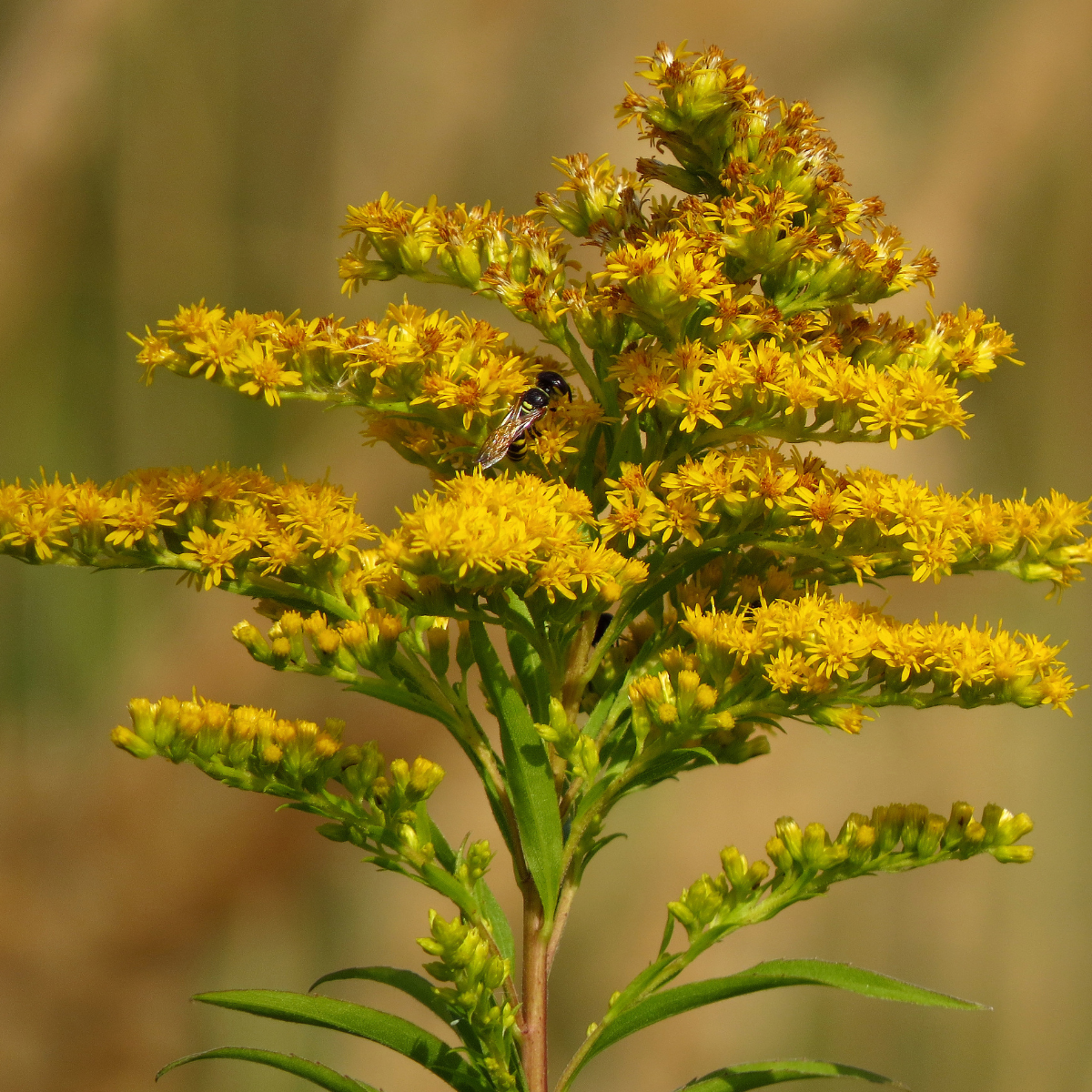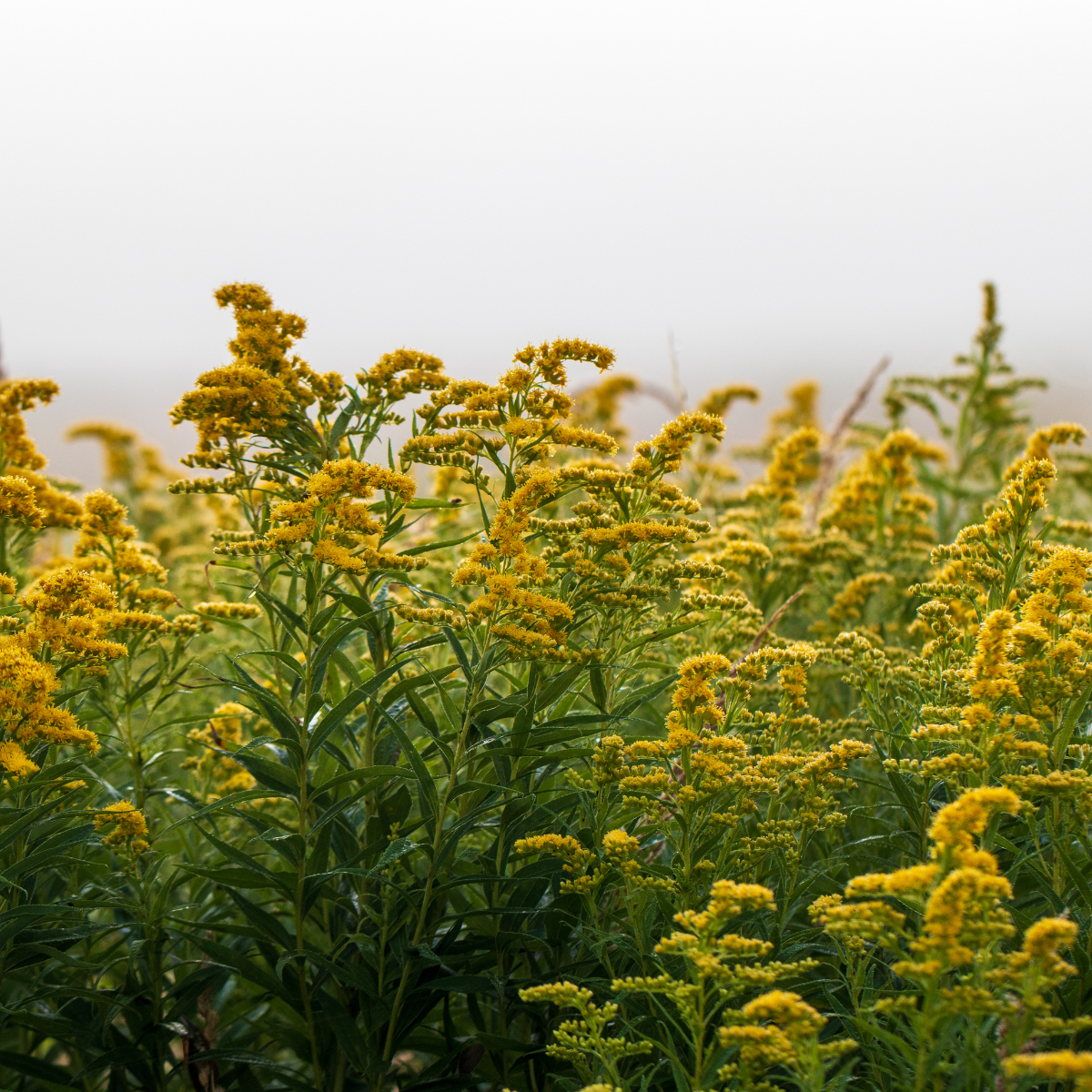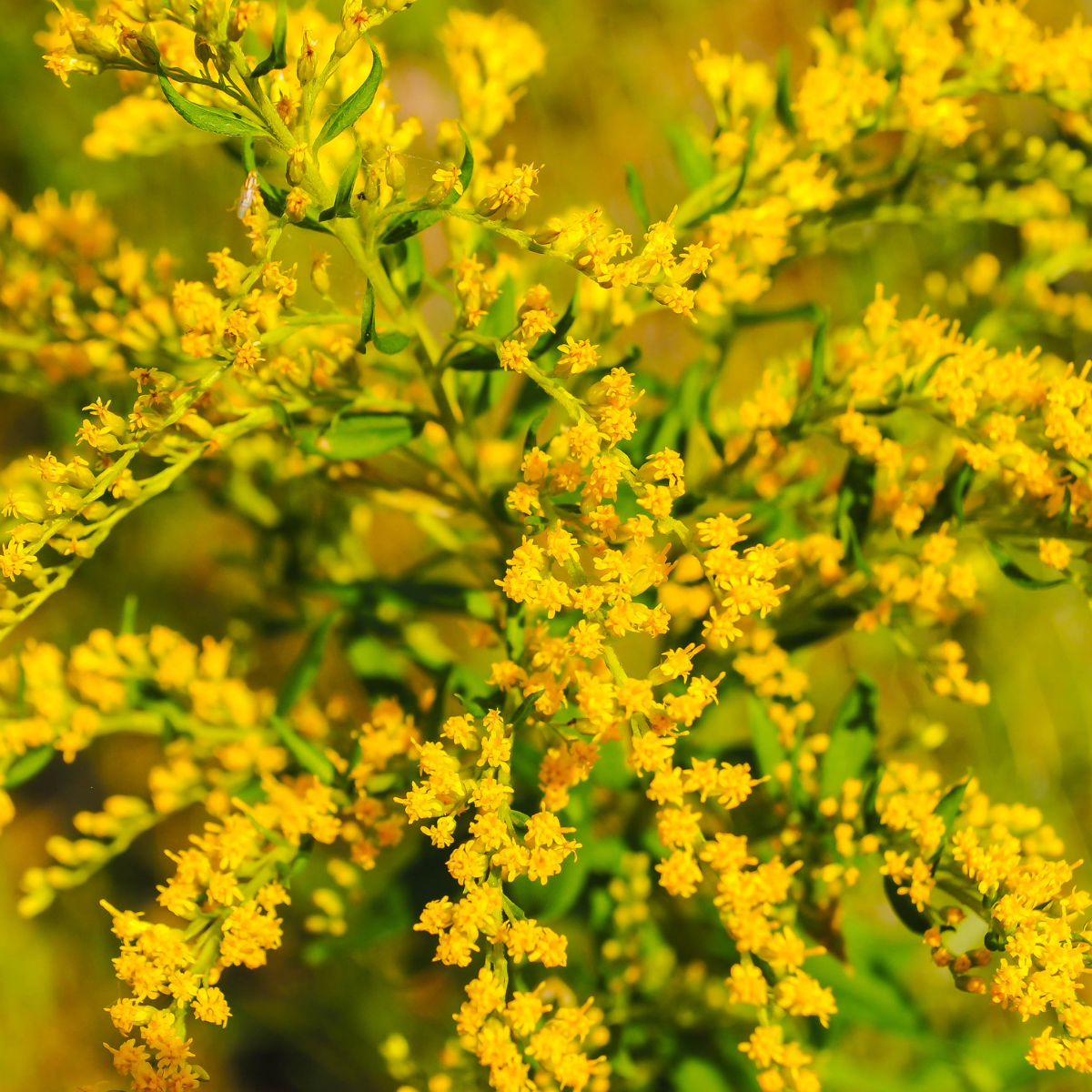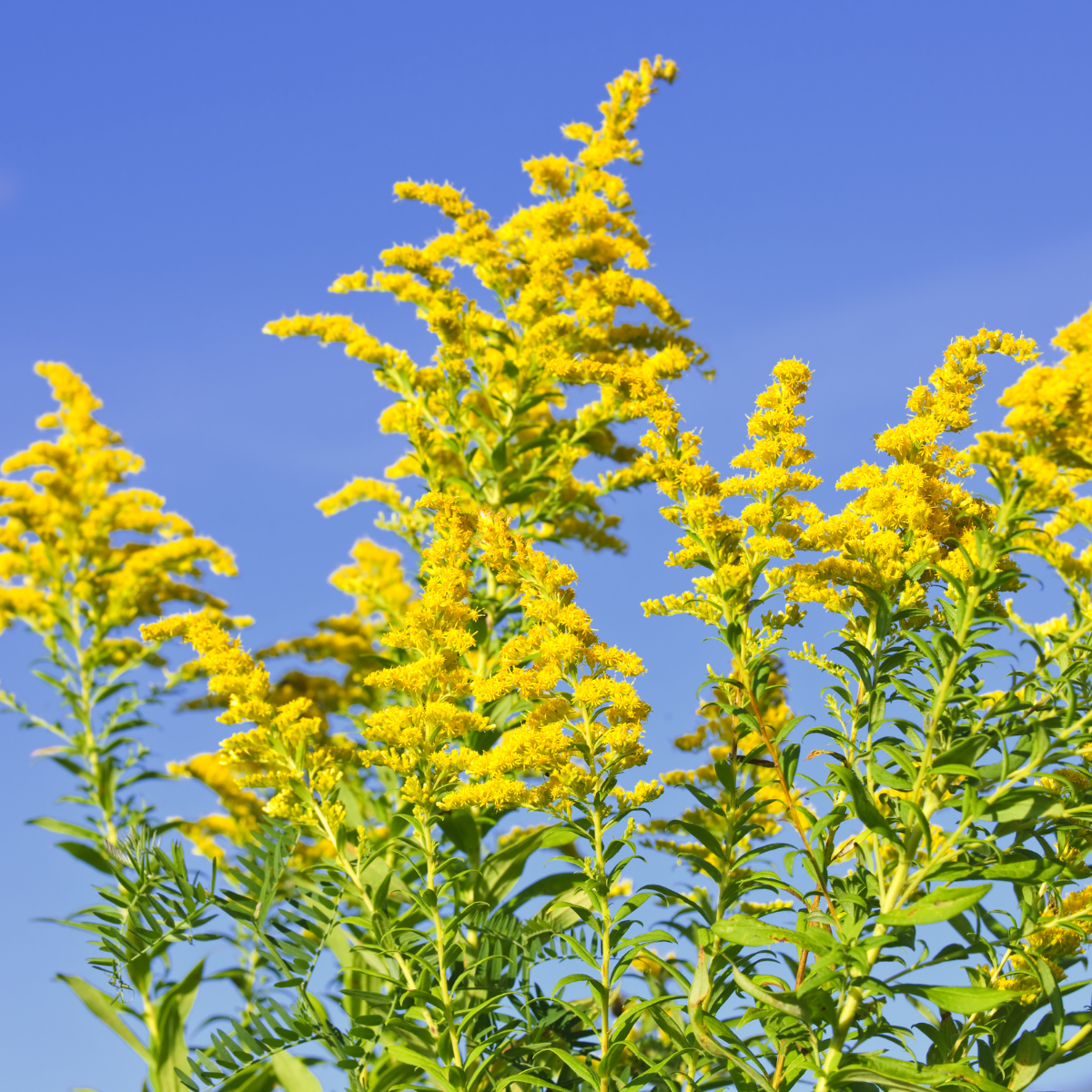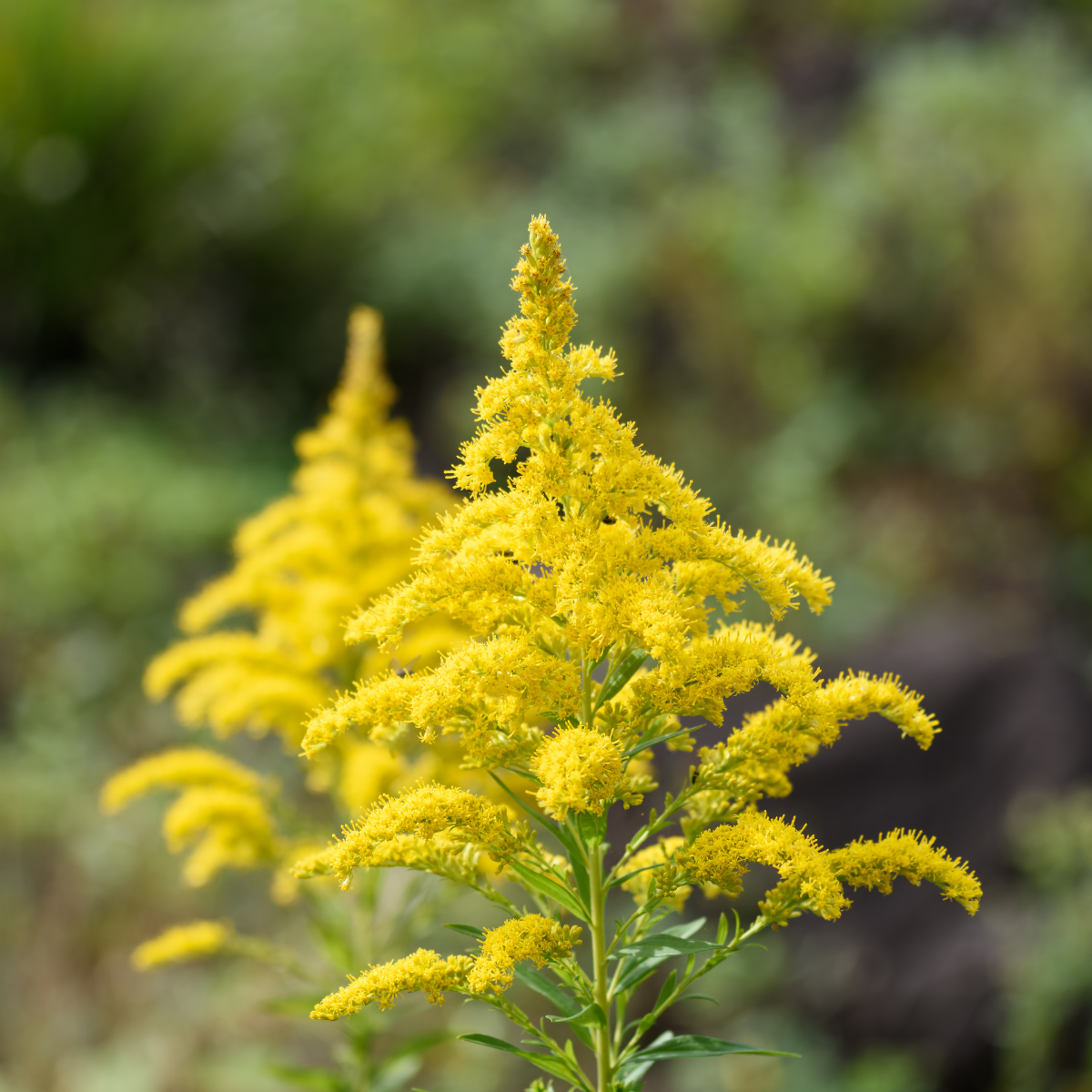Goldenrod (Solidago spp.)
General Description
Goldenrod (Solidago spp.) is a hardy perennial plant known for its vibrant golden-yellow flower spikes that brighten meadows, prairies, and gardens. Native to North America and Eurasia, Goldenrod has long been valued for its ornamental beauty, ecological importance, and traditional medicinal uses. Often mistaken for a cause of allergies, this plant is actually an essential pollinator-friendly species, attracting bees, butterflies, and beneficial insects. Its adaptability and late-season blooming make it a staple in wildflower gardens and natural landscapes.
Plant Characteristics
Goldenrod typically grows between 60 cm and 2.4 meters in height, depending on the species. It produces upright stems covered with narrow, lance-shaped green leaves, and in late summer to early autumn, it blooms with clusters of small, golden-yellow flowers arranged in arching sprays or dense plumes. The plant thrives in diverse environments, from dry fields to moist meadows, making it a resilient and low-maintenance addition to gardens.
Taste and Benefits
While not commonly consumed, certain species of Goldenrod have been used in herbal medicine for their diuretic, anti-inflammatory, and antimicrobial properties. The leaves and flowers have been traditionally brewed into teas to support kidney health and respiratory function. However, its primary value lies in its ability to support pollinators and enhance biodiversity in garden settings.
Cultivation Recommendations
Goldenrod is an easy-to-grow plant that thrives in full sun and well-drained soil. Seeds should be sown in early spring or autumn, lightly pressed into the soil, and kept moist until germination occurs, typically within 14 to 21 days. Once established, the plant is drought-tolerant and requires minimal care. It spreads gradually through rhizomes, making it ideal for naturalized gardens and wildflower meadows. Regular pruning can help control its spread if grown in smaller garden spaces.
Uses and Benefits
Goldenrod is widely cultivated for its ornamental beauty, providing a late-season burst of color when many other plants have finished blooming. It is an excellent choice for pollinator gardens, as its nectar-rich flowers attract bees, butterflies, and beneficial insects. In addition, it helps prevent soil erosion and supports ecological diversity. The dried flowers and stems can also be used in floral arrangements or as natural dyes.
Packaging
The seeds are carefully selected and packed in moisture-resistant packaging to ensure high germination rates and long-term viability.
Shipping Information
Orders are processed within 1–2 days and shipped worldwide, including across India. Delivery typically takes 1–2 weeks, depending on the destination.
Grow this vibrant and pollinator-friendly plant with premium seeds from Deodar Seeds.
General Description
Goldenrod (Solidago spp.) is a hardy perennial plant known for its vibrant golden-yellow flower spikes that brighten meadows, prairies, and gardens. Native to North America and Eurasia, Goldenrod has long been valued for its ornamental beauty, ecological importance, and traditional medicinal uses. Often mistaken for a cause of allergies, this plant is actually an essential pollinator-friendly species, attracting bees, butterflies, and beneficial insects. Its adaptability and late-season blooming make it a staple in wildflower gardens and natural landscapes.
Plant Characteristics
Goldenrod typically grows between 60 cm and 2.4 meters in height, depending on the species. It produces upright stems covered with narrow, lance-shaped green leaves, and in late summer to early autumn, it blooms with clusters of small, golden-yellow flowers arranged in arching sprays or dense plumes. The plant thrives in diverse environments, from dry fields to moist meadows, making it a resilient and low-maintenance addition to gardens.
Taste and Benefits
While not commonly consumed, certain species of Goldenrod have been used in herbal medicine for their diuretic, anti-inflammatory, and antimicrobial properties. The leaves and flowers have been traditionally brewed into teas to support kidney health and respiratory function. However, its primary value lies in its ability to support pollinators and enhance biodiversity in garden settings.
Cultivation Recommendations
Goldenrod is an easy-to-grow plant that thrives in full sun and well-drained soil. Seeds should be sown in early spring or autumn, lightly pressed into the soil, and kept moist until germination occurs, typically within 14 to 21 days. Once established, the plant is drought-tolerant and requires minimal care. It spreads gradually through rhizomes, making it ideal for naturalized gardens and wildflower meadows. Regular pruning can help control its spread if grown in smaller garden spaces.
Uses and Benefits
Goldenrod is widely cultivated for its ornamental beauty, providing a late-season burst of color when many other plants have finished blooming. It is an excellent choice for pollinator gardens, as its nectar-rich flowers attract bees, butterflies, and beneficial insects. In addition, it helps prevent soil erosion and supports ecological diversity. The dried flowers and stems can also be used in floral arrangements or as natural dyes.
Packaging
The seeds are carefully selected and packed in moisture-resistant packaging to ensure high germination rates and long-term viability.
Shipping Information
Orders are processed within 1–2 days and shipped worldwide, including across India. Delivery typically takes 1–2 weeks, depending on the destination.
Grow this vibrant and pollinator-friendly plant with premium seeds from Deodar Seeds.
Goldenrod, Solidago seeds - 50
- Brand: Deodar Seeds
- Product Code: HER91
- Availability: In Stock
₹333.00

